Chaos Galaxy 2: The Advance Wars + Grand Strategy Oddity
What happens when Advance Wars meets Grand Strategy?
I miss the Advance Wars series something fierce. Dual Strike was fun but was generally unfavored compared to Black Hole Rising; and Days of Ruin decided that rebooting a happy game into a depressing story with tinnitus-inducing music was a good idea.
I was introduced to Chaos Galaxy 2 (CG2) by the following pitch, "Advance Wars meets Grand Strategy", and I was immediately curious. As the title implies, my experience with this game was a mixed bag.
Music/Soundtrack
One positive aspect to the game I want to highlight right away is CG2’s soundtrack. It has a range of loops with some that are pleasant to listen to, especially the main menu’s theme.
Each track has its own feel to it that you would think would clash with each other, but CG2’s usage of the music works in a way that’s hard to describe. It’s one of those situations where something fits and that’s all you can really say.
Regretfully, the soundtrack appears to not be hosted online anywhere; you'll just have to take my word on how it sounds.
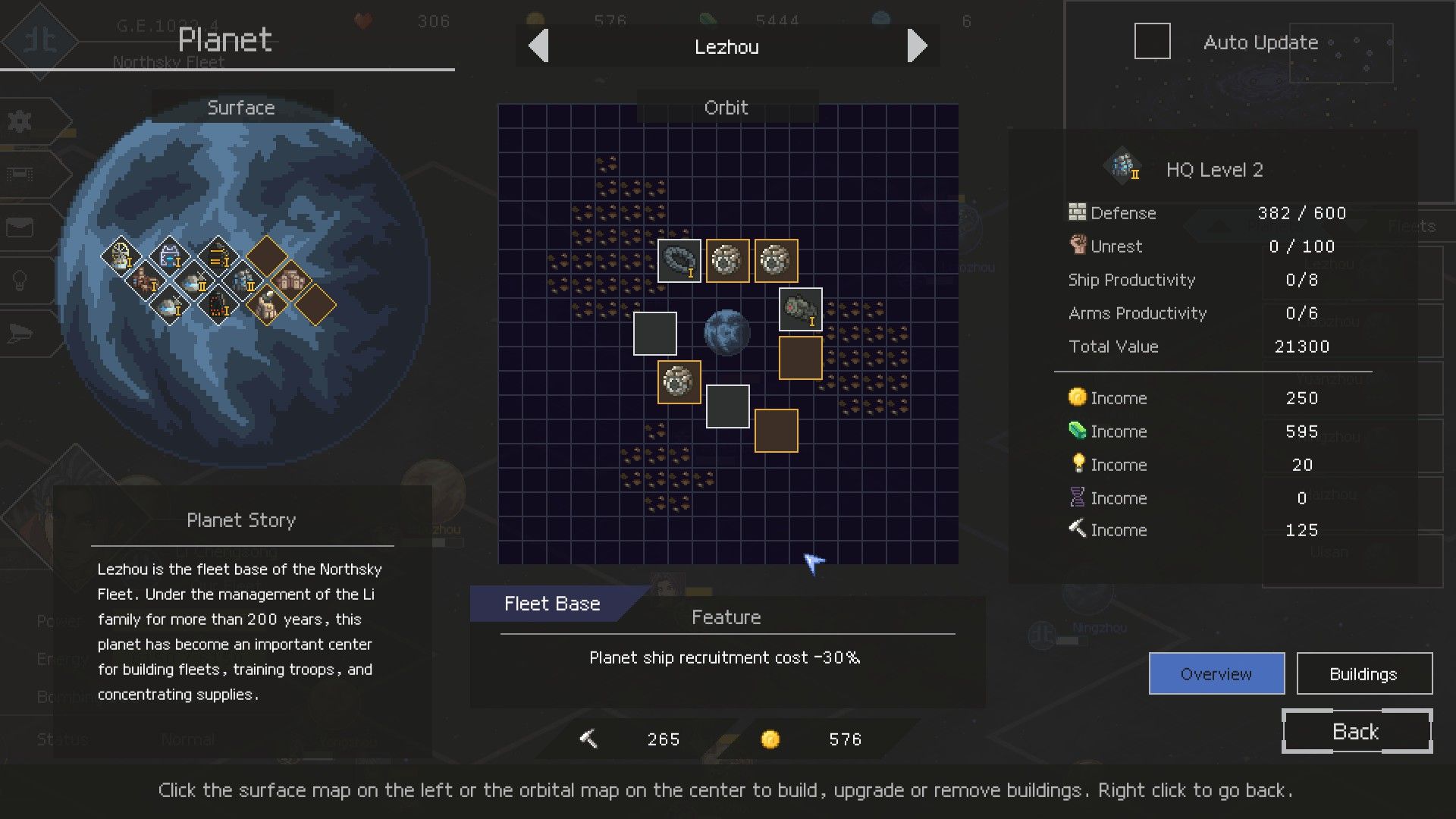
Macro Strategy
As this is a grand strategy game, gameplay takes place in two layers: empire building on the galactic map, and individual battle maps with space combat. The macro layer has interesting ideas for its systems, with buildings being upgradable through labor points that are generated from other buildings; and the standard research tree fare.
You’re given free rein to build whatever planet building you’d like. Want to turn your rock into New Cadia? Go nuts setting up lasers, defenses and bunkers. Want to make a totally-not Coruscant planet? It’s your choice; just make sure you’re prepared for it and have the funding to support their upkeep.
Turn-Based Spray and Pray
Fleets are the main way you project force on the galactic map and are led by commanders. Using these fleets, you’re able to expand your empire by bombing the crap out of a planet until its defenses reach zero. Fleets are where the Advance Wars comparisons come from, and I am sad to report that they are not that similar.
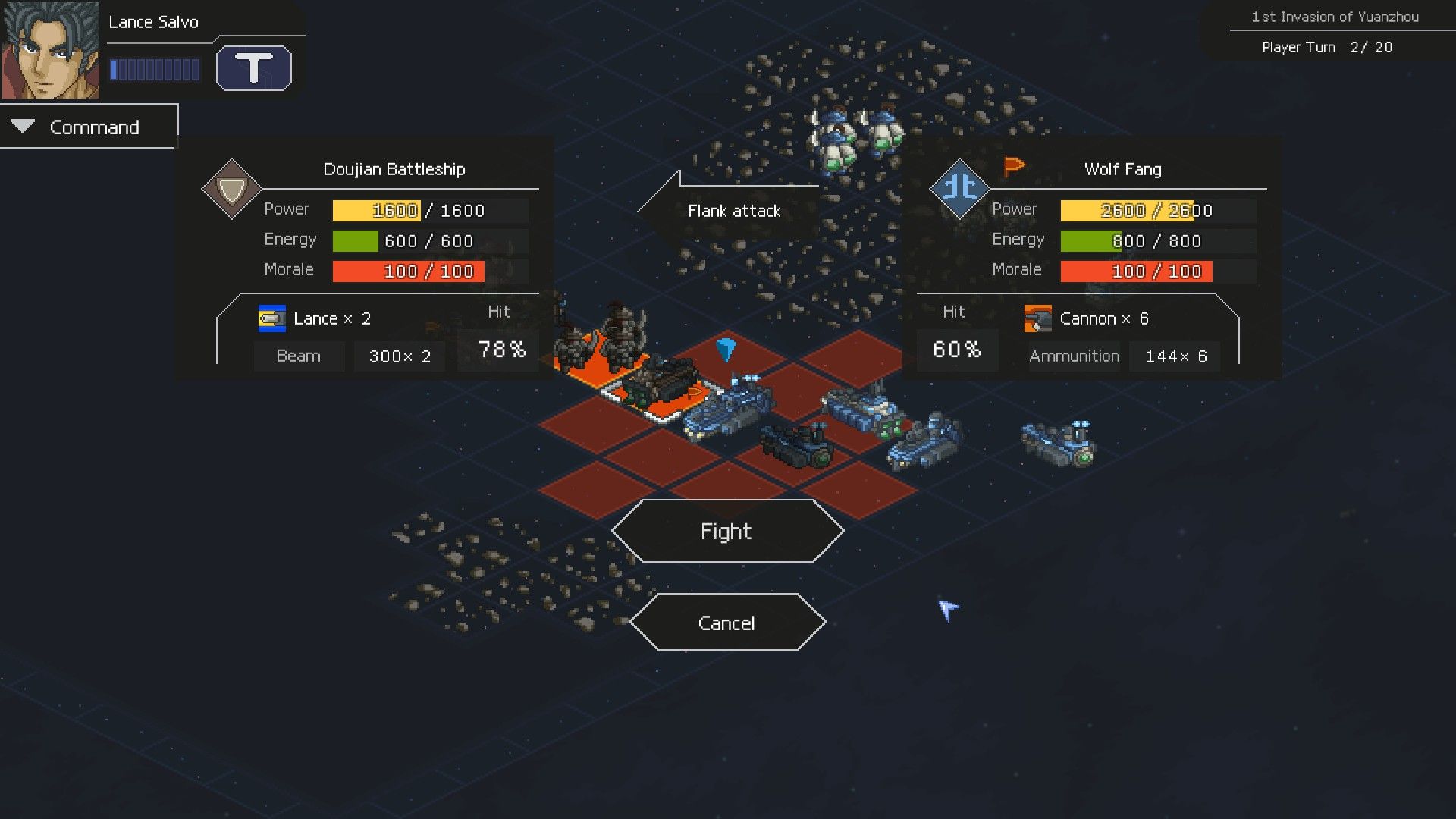
Turn-based grid combat with CO Powers and units that need “ammunition” resupplies are really the only main similarities between CG2 and AW. There is little in terrain strategy—it is space after all—as CG2 instead has positional strategy with flank and rear attacks.
Also gone are effective unit matchups with complete accuracy. Instead, if you’re familiar with the phrase “That’s XCOM, baby!,” you’ll love positioning your ship behind the enemy only to miss five of your six shots.
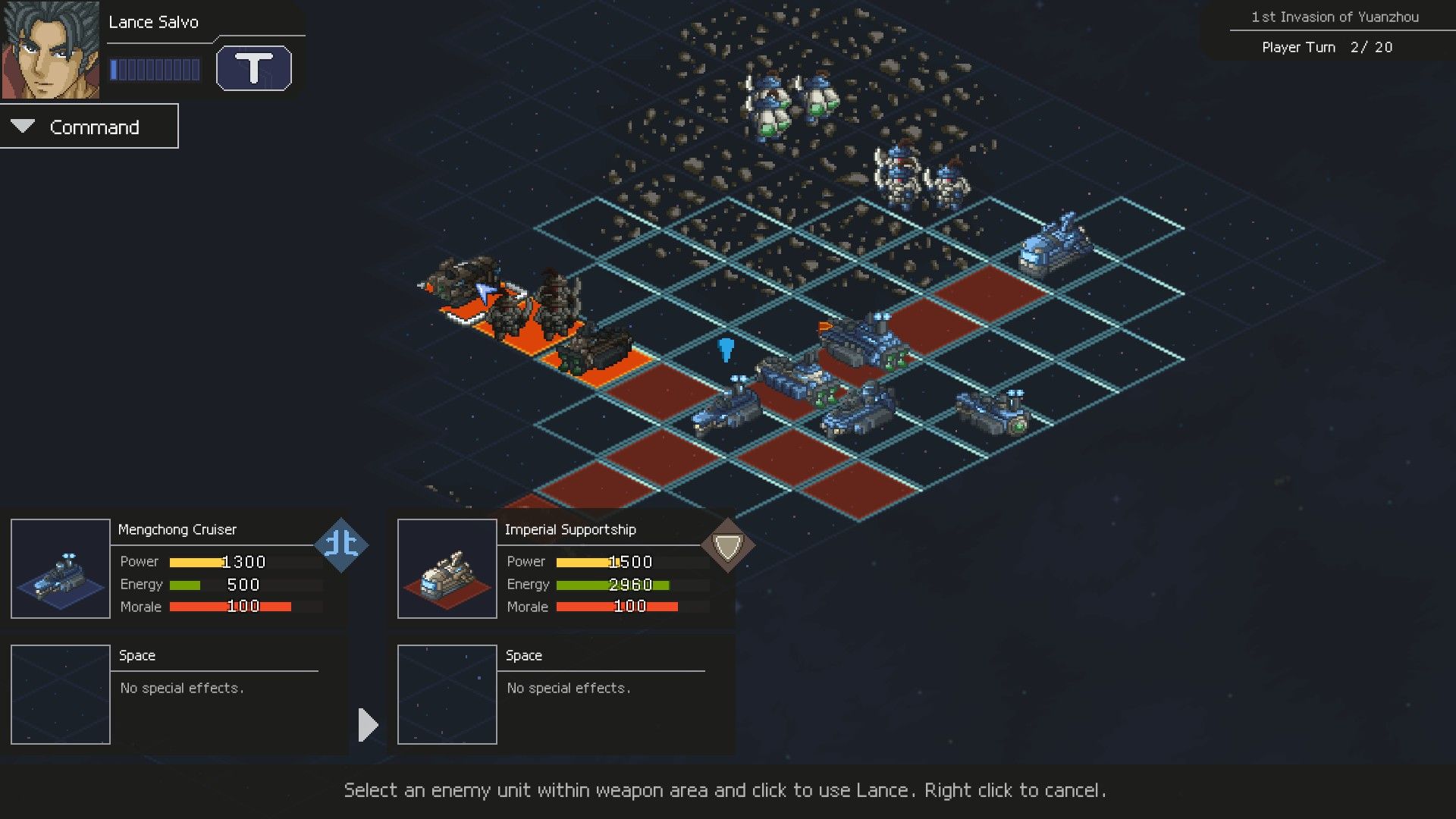
Faction Balance
The ultimate downfall of this game is faction balance, specifically the lack of it. Upon beginning a campaign, you’re given the choice of a multitude of factions that each have a starter war chest of cash, supplies, planets and leaders.
The problem is that these values aren’t balanced against those of other factions and can easily snowball.
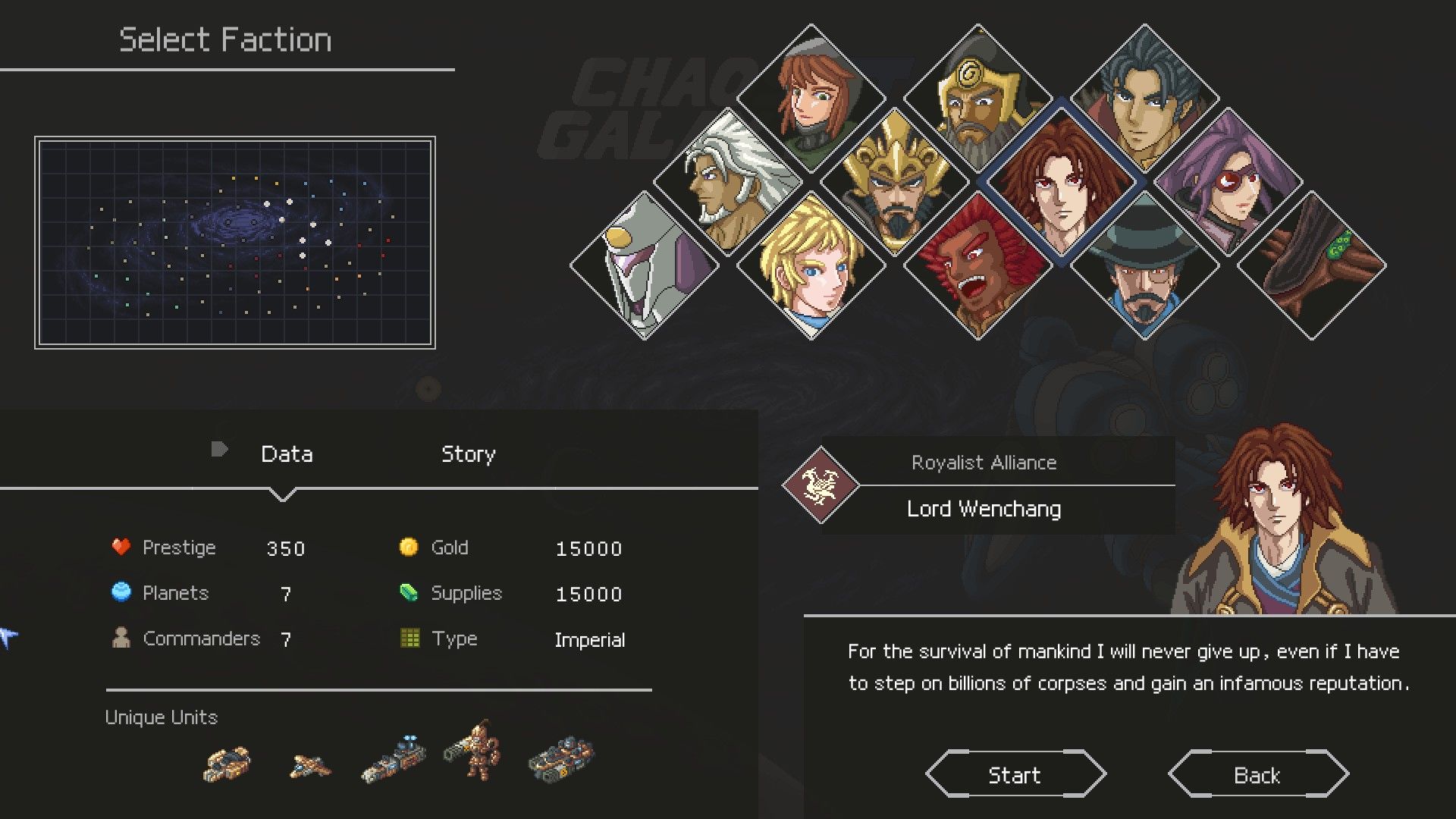
The more planets you have, the more tax you can eventually collect with more building space. If you have fewer planets, you have to dedicate more space to outpace what other factions can do if they’re being careless.
This isn’t the only disparity, as some factions start with double the number of commanders of others; and thus has a major advantage in projecting force. Combine these two factors, also with differing starter funds, and the never-changing galaxy map, and you’re potentially screwed from the start.
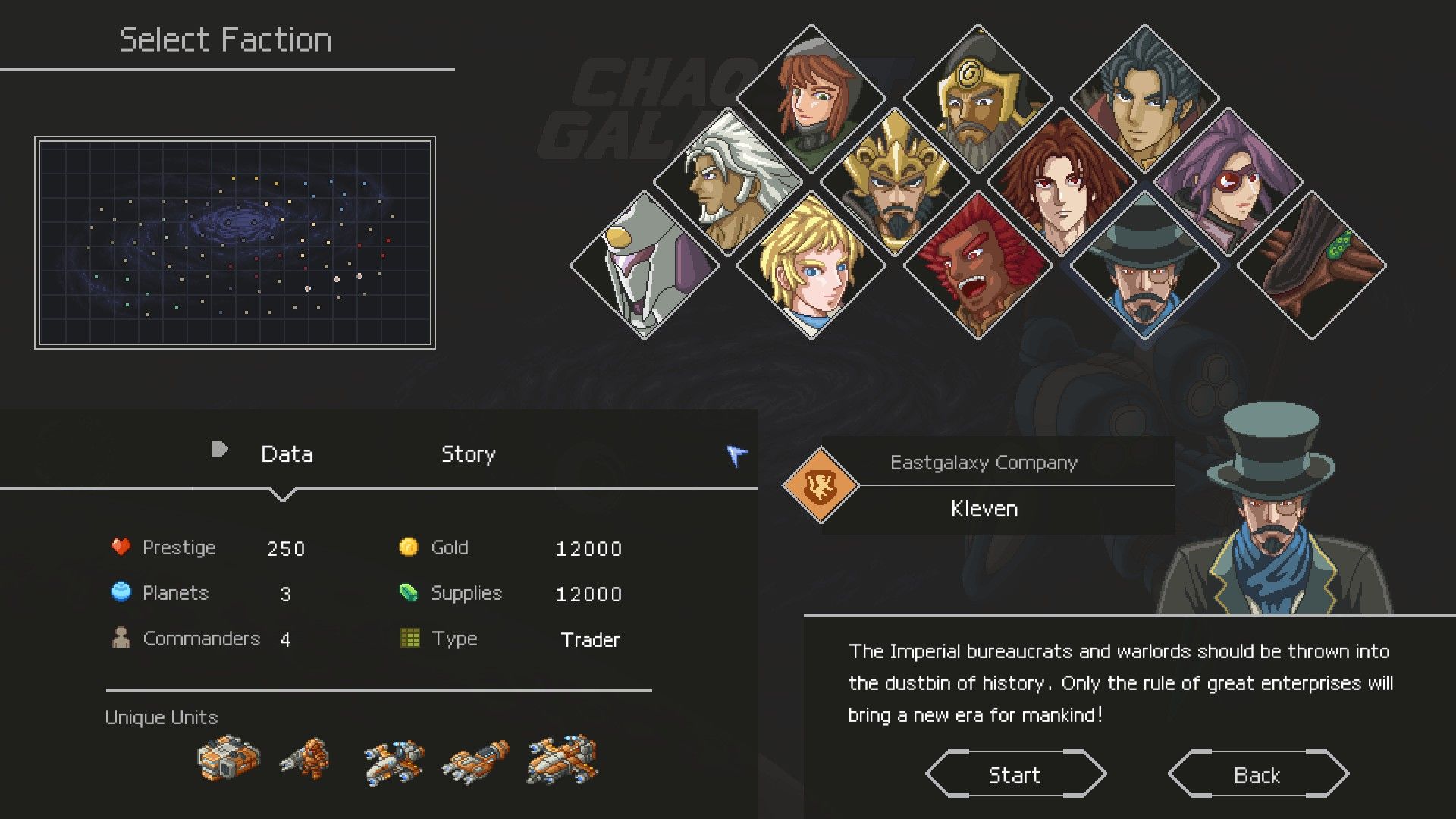
My first session after the mediocre tutorial was playing as the EastGalaxy Company. After sending my fleets out to expand my territory, I had a token defense fleet that was capitalized on by the enemy. I thought I could outmaneuver them and win by attrition, but it turned out to be impossible. Not for lack of trying, but because the enemy all had kinetic barriers and thus my projectile weapons had another bar to crunch through. This was just month (turn) 7.
It has the air of a “git gud” moment, but it’s also something for potential buyers to consider. Depending on what faction you select, factions X, Y, and Z will always be your immediate threat. They will always have these attributes and units available at the start. Perhaps that’s what you’re looking for in a grand strategy game.
When it comes to strategy games, I personally find having pre-established territory and power boring to have and fight against.
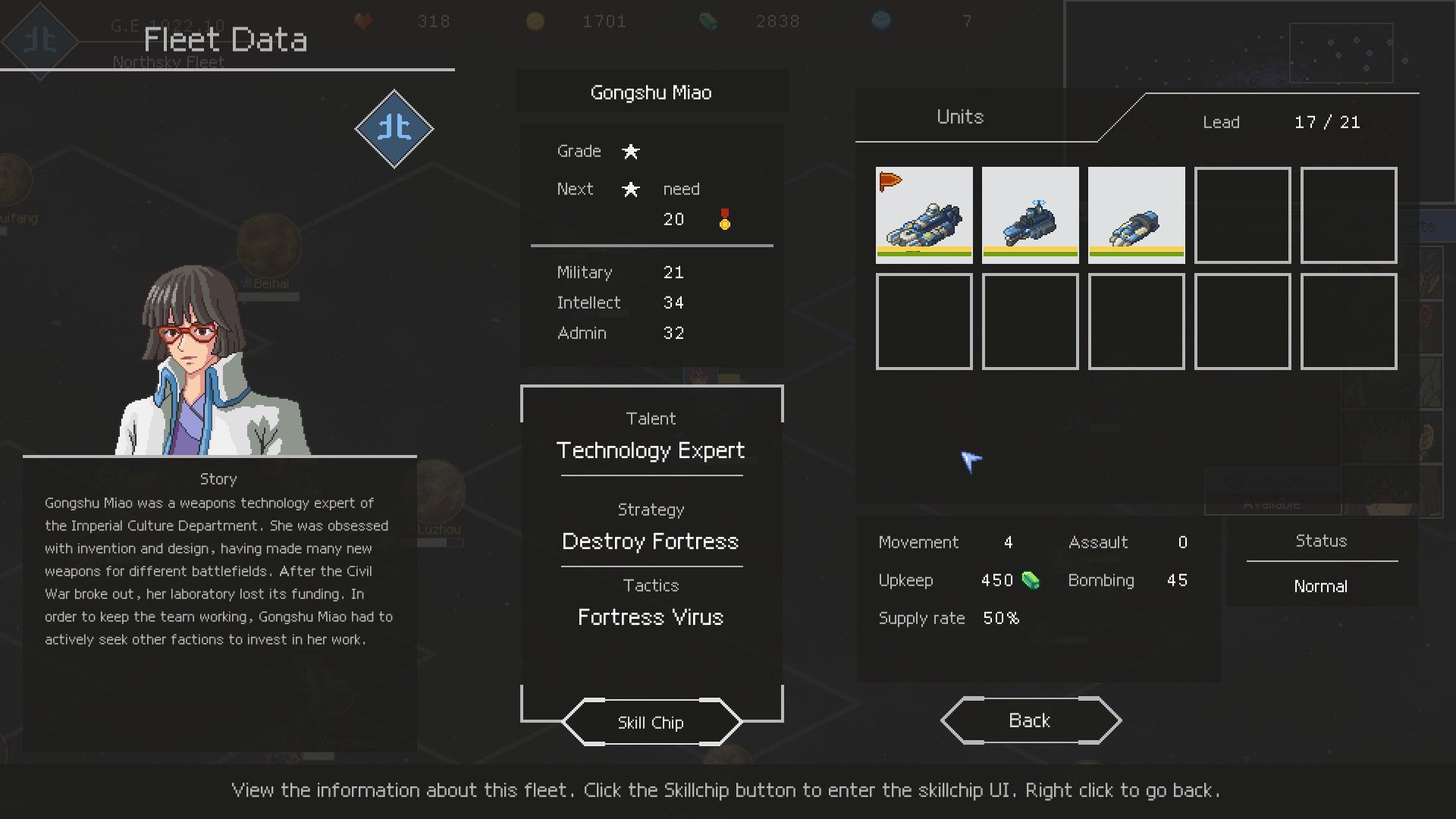
Small Notes
CG2 is a sprite game, and it has a certain nostalgic quality with its art style and visual design. The little sprites for buildings in the UI have an aesthetic that remind me of the SNES.
The UI in terms of usability is poor, saved only by right-click being an easy menu-escape. However, you’ll find that it’s useful for learning information about the game in various parts of the UI; anything that isn’t fluff is relevant to know. It’s just a shame that the tutorial taught me less than fumbling around with the UI.
Final Score

2/5: Mediocre—May be worthwhile to series fans or GSG fans willing to experiment.
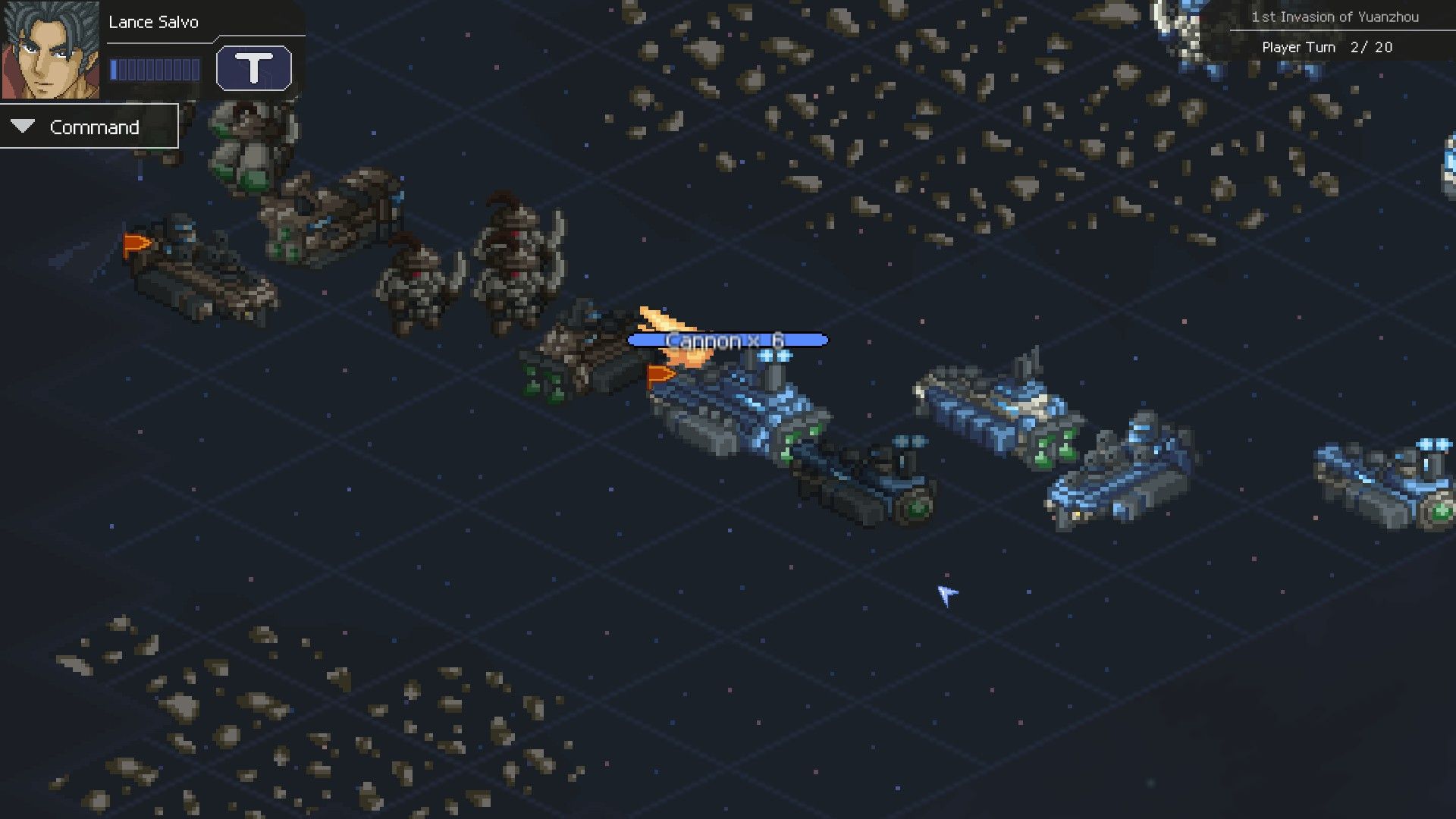
Chaos Galaxy 2 is a nostalgic game for reasons not from its own merit. It has the feeling of a flash game posted on Newgrounds with a lot of heart behind its development, made by a single dev or small team; focused on a single vision.
This flash game isn’t good, but you find things you like about it that are sadly dragged down by the rest.
This would be easily excusable if it were a free flash game released years ago, but this game is being sold for $20 today.
